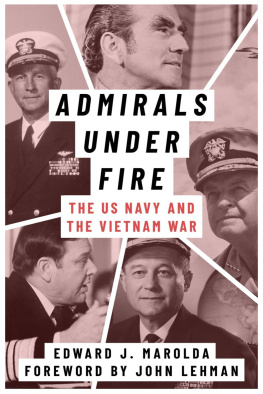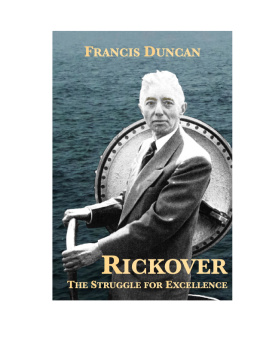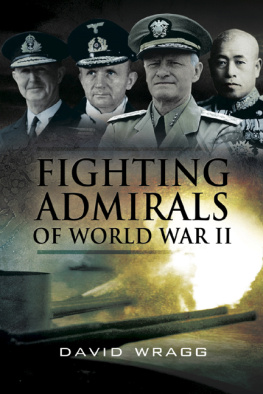| Note: | Images of the original pages are available through Internet Archive. See http://archive.org/details/admiralsofbritis00dodduoft |
Admirals
OF THE
British Navy
Portraits in Colours by
FRANCIS DODD
With Introduction and Biographical Notes
PUBLISHED FROM THE OFFICES OF "COUNTRY LIFE," LTD.,
20, TAVISTOCK STREET, COVENT GARDEN, LONDON;
AND GEORGE NEWNES, LTD., 8-11, SOUTHAMPTON STREET,
STRAND, LONDON, W.C. 2.
MCMXVII
Part I Cover
INTRODUCTION
I F the English are singularly incurious about their Navy, that attitude must not be thought to imply neglect. On the contrary, it is a blend of admiration, respect, and, above all, confidence, induced very largely by the Navy itself. For so long has the Navy minded its own silent business that weotherwise so inquisitive a peoplehave come to look upon it as beyond examination and (normally too eager to cut open the drum and explore its resources) trustfully to leave it to its own devices, conscious that those devices are wholly in our own interests. As Matthew Arnold said in his sonnet to Shakespeare:
Others abide our question, thou art free
so do we address the Navy. For, although it baffles curiosity and ends by eliminating it, it is only to substitute faith. We do not take for granted all the things that we cannot understand: sometimes, indeed, we deny them; but we are satisfied to take for granted the Navy. We know that it is there. Where "there" is we may have no notion; by "there" we mean probably everywhere. The Navy is not only there, the Navy is everywhere, and therefore all's well. That is our simple creed.
A further cause for this quiet and unusual acceptivity is to be found in the medium in which the Navy worksthe sea itself. The sea has ever been a barrier to investigation, and the Navy and the sea are one. Public opinion is land-made, and landsmen have neither time nor inclination to cope with the riddles of the ocean, which to most of us is vague and inimical, the home of risks and discomforts which it is wiser to avoid. Well content to consider her, from a safe distance, as a Sphinx, we are very happy that to others has fallen the perilous lot of patrolling her and very full of gratitude for their courage and success.
If the Army, on the contrary, is so much under the microscope, it is largely because it has few or no mysteries. We know the rules. Armies are made up of men like ourselves (only better). They advance as we do, by putting one foot before another, on the solid earth. Their movements are followable, even if we cannot always understand them; daily bulletins are printed in the public Press. But the Navy keeps its secrets. Not only have we no notion where it is, but we should be little the wiser as to its inner purposes if, scanning the illimitable and capricious waves, it should be our fortune to descry here and there a flotilla of its dark grey hulls. Even in harbour most men pointing out a cruiser to their children say "That's a dreadnought"a state of confusion bred and fostered by the strange, dark, dangerous element in which the Navy has its being.
So much for the causes of our odd willingness to forego one of the chief privileges of British birthright, which is to criticise, even to belittling, all that is ours. But there is justification, too, as the state of the sea to-day testifies. Thanks to the Navy there is at this moment hardly an enemy ship at large on the surface of the waters. The Kaiser's darling ironclads are idle as painted ships upon a painted ocean: not even an ocean, a canal. Our troops in millions have crossed to the Continent. We have enough to eat.
By what wonders of efficiency and discipline, machinery and co-ordination, this result has been brought about we neither know nor are concerned to enquire. Enough that it is. But when it comes to personnel, curiosity is legitimate; and this collection of portraits and brief biographies has been prepared in the belief that very many of those whose lives have been rendered secure by these efforts of the Navy would like to see what manner of men are in control of our safeguards. This is the heyday of the picture, and here are the pictures of our leading sailorsthe commanders who stand between us and the foe and keep the foe at bay.
Charles Lamb (who was less of a sea-dog even than most men) confessed in old age that he once sat to an artist friend for the portraits of sixteen British Admirals. Mr. Dodd (even could a sitter of such notable companionableness be now found) would have forced himself to dispense with the fun of using him, for verisimilitude's sake, because all these heads have been drawn from life and are reproduced as nearly as possible in the colours of life. Looking over the forty and more Naval heroes whom he has limned, one is struck by a generic likeness which is deeper than such superficial similarity as the service beard can confer. Most of the Admirals look like Admiralsand is there a better thing to be? Certainly there is no better word. Not only have their ability and courage and character united to lift them to high position and authority; but here, again, we discern the subtle and penetrating influence of the sea, a mistress who will allow no relaxation of vigilance or toil, so swiftly and dangerously changeable can she be. Hence the keen eyes, the level gaze, of all who would understand and cope with her, and noticeably of all this gallant company.
In the present work the emphasis is laid rather upon the illustrations than the letterpress. It is a gallery of portraits rather than a series of biographies such as "The Lives of the British Admirals," which was written by Dr. John Campbell, and, with periodical additions, so long held the field. The time for such biographies happily is not yet. But when it comes may there be some victories (already, of course, there are three or four) to record as decisive and as noble as those in Campbell's volumes!
E. V. LUCAS.
I
ADMIRAL SIR JOHN R. JELLICOE, G.C.B., O.M., G.C.V.O.
A DMIRAL SIR JOHN RUSHWORTH JELLICOE, G.C.B., O.M., G.C.V.O., was born on December 5th, 1859. He was educated at Rottingdean, and entered the Navy in 1872, becoming in 1880 a Lieutenant (three First Class Certificates). As a young officer he specialised in Gunnery.
During the Egyptian War, as Lieutenant of the "Agincourt," he gained the Egyptian Medal and Khedive's Bronze Star. In 1883 he received a special 80 prize at the Royal Naval College.
In May, 1886, Lieutenant Jellicoe was awarded the Board of Trade Silver Medal for having commanded a gig, manned by volunteers, which set out to rescue the crew of a steamer stranded on a sandbank near Gibraltar. A heavy sea was running and the boat capsized, but the crew, being provided with cork jackets, managed to reach the shore in safety.
Lieutenant Jellicoe was Assistant to the Director of Naval Ordnance from 1888 to 1891, on June 30th of which year he became a Commander, and was serving in the "Victoria" when she foundered off Tripoli after collision with the "Camperdown" on June 27th, 1893. At the time of the catastrophe Commander Jellicoe was suffering from Mediterranean fever. He was promoted to Captain on January 1st, 1897. During the Boxer outbreak in 1900 he was Flag-Captain in the "Centurion," and took part in Admiral Sir E. H. Seymour's International Expedition to relieve the Pekin Legations. In this Expedition he acted as Chief Staff Officer, was wounded, and afterwards received the C.B. for his services.






